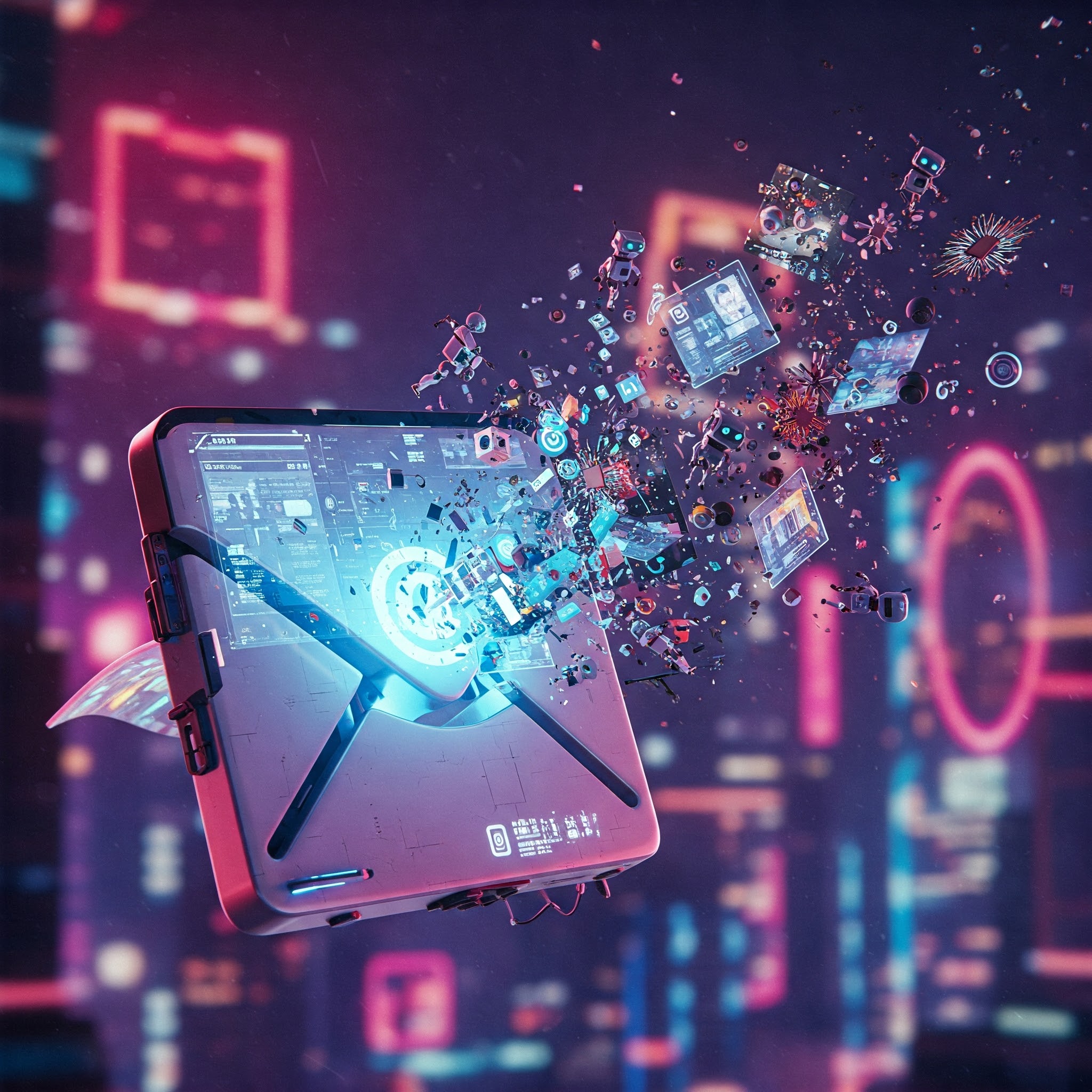The robots are coming! Or, at least, they’re generating images. And the comic book world, traditionally a haven for human creativity fueled by caffeine and existential dread, is facing the music. AI image generators like DALL-E, Midjourney, and Stable Diffusion are churning out visuals faster than you can say ‘uncanny valley.’ The big question: are comic artists about to be replaced by algorithms with a penchant for panels?
Rise of the Machines (and the Panels)
AI image generation is no longer a sci-fi fantasy; it’s a present-day reality. Type in a prompt – ‘a cyborg samurai fighting a giant squid in Neo-Tokyo’ – and bam! Instant (digital) art. For the comic industry, this means rapid prototyping, quick concept sketches, and the potential to visualize stories without picking up a pencil. Sounds idyllic, right? Well, hold your horses (or should we say, robotic unicorns).
Jobs: Skynet or Symbiosis?
The obvious fear is job displacement. If AI can generate panels on demand, who needs human artists, right? Reports from places like China, where video game illustration jobs have reportedly plummeted thanks to AI, paint a grim picture. But it’s not all doom and gloom. Some argue AI can be a powerful assistant, automating the tedious bits (drawing hundreds of identical bricks in a cityscape, anyone?) and freeing up artists to focus on the juicy stuff: character development, dynamic layouts, and injecting actual emotion into their work. Think of it as a digital sidekick, not a robotic overlord. At least, that’s the optimistic spin.
Tools like “Free Tool to Generate AI Images” (catchy name, we know) offer even more control, allowing artists to maintain visual consistency across panels, a crucial element in comics. Consistent character design is key, and these new platforms enable artists to render characters with consistent visual identities across multiple panels or scenes.
Ethical Quandaries: Who Owns the Bots?
Now for the thorny bit: ethics. AI models are trained on massive datasets, often scraped from the internet. This includes copyrighted artwork, used without the artists’ consent. Cue the outrage. Is AI art original, or just a sophisticated remix of existing work? The legal system is scrambling to catch up. In the US, the courts have ruled that AI-generated art without human authorship can’t be copyrighted. Ouch. So, if a robot draws your next cover, you can’t exactly sue if someone rips it off. The legal ramifications alone are enough to induce a migraine.
Industry Fights Back (Sort Of)
The comic industry isn’t taking this lying down. In the UK, Comic Book UK is lobbying for government recognition and protection for creators’ rights. Artists are also adapting, experimenting with AI to generate backgrounds, textures, or even just brainstorming ideas. It’s a learning process, figuring out how to wield this new tool without losing the soul of the art form. AI platforms now offer advanced features for maintaining visual coherence, such as structure or style transfer between images, enabling artists to create consistent characters across frames efficiently.
The Audience Speaks (Maybe)
What do comic readers think? Opinions are… divided. Some are excited by the potential for new styles and stories. Others are skeptical, questioning the authenticity and emotional depth of AI-generated art. Can a robot truly capture the angst of a teenage superhero or the simmering tension between two arch-enemies? Jury’s still out.
The Human Touch: Still Needed (For Now)
Ultimately, the heart of comic art lies in the human experience. The emotions, cultural nuances, and personal narratives that artists pour into their work are hard for AI to replicate. That human connection, that spark of creativity, is what makes comics more than just pretty pictures. It’s what makes them art.
The Verdict: Coexistence (with a Side of Anxiety)
So, will AI replace comic artists? The answer, as always, is a resounding ‘it’s complicated.’ AI presents both threats and opportunities. It might automate some tasks, but it also opens up new creative avenues. The future likely involves a complex dance between humans and machines, where AI serves as a tool, not a replacement. Comic artists, known for their adaptability (and their ability to draw superheroes in impossibly dynamic poses), will likely find ways to thrive in this evolving landscape. But expect a few existential crises along the way. After all, what’s art without a little bit of angst?

